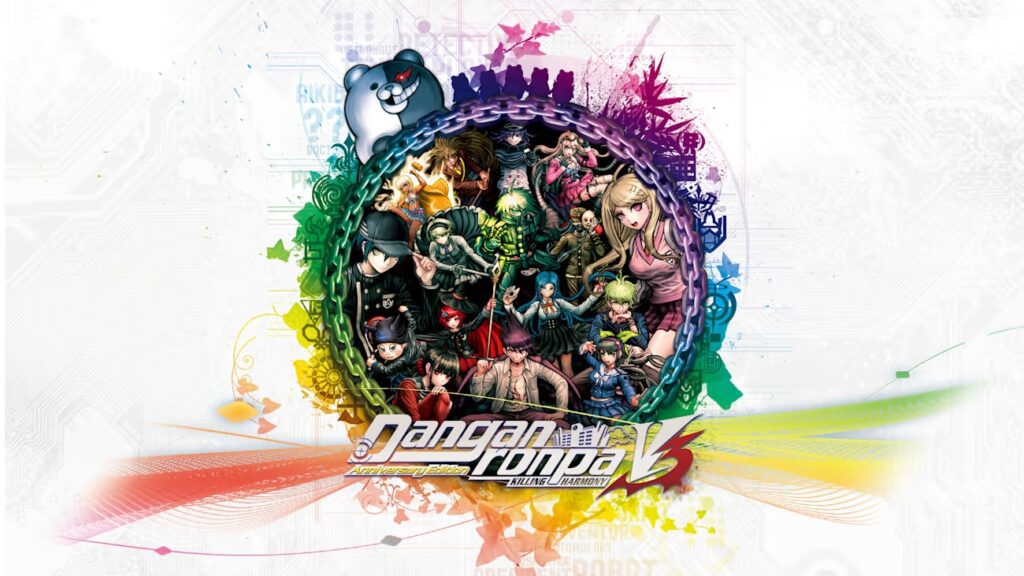
Those of you who are familiar with Danganronpa are probably fairly aware that it’s now available for most systems. There are anime seasons for each game, soundtracks, merch, and even spin-off games. It’s a pretty popular franchise and for something that got started on the Vita a good decade ago, fairly enduring. But what you may not know is that Spike Chunsoft has been porting the Danganronpa series to mobile platforms so that pretty much anyone can enjoy them! Recently, as part of the 10th anniversary celebration, Spike Chunsoft released Danganronpa V3: Killing Harmony for mobile devices, the final main series game to receive a port! Let’s take a look at what’s under the hood of this latest version of Danganronpa V3!

There’s no reason to go deep into the details of the plot for Danganronpa V3. This isn’t really a good entry point into the series and if you’ve gotten this far, you’re familiar with Monokuma’s killing game for ‘Ultimate’ teens. This time around you’re a female piano player named Kaede Akamatsu and you’re the Ultimate Pianist. V3 might have the slowest start of any of the Danganronpa games though, and for several hours you’re looking at a ton of exposition, crude comedy, and aggressive swearing before a single student gets whacked. It’s a bit frustrating to wait for a payoff that long and honestly, the prologue is a bit too drawn out but when things get going, that old Danganronpa charm kicks in and it’s definitely a good time. There are plenty of reviews of the game and they’re pretty much all positive, so let’s look more at the mobile side of things.
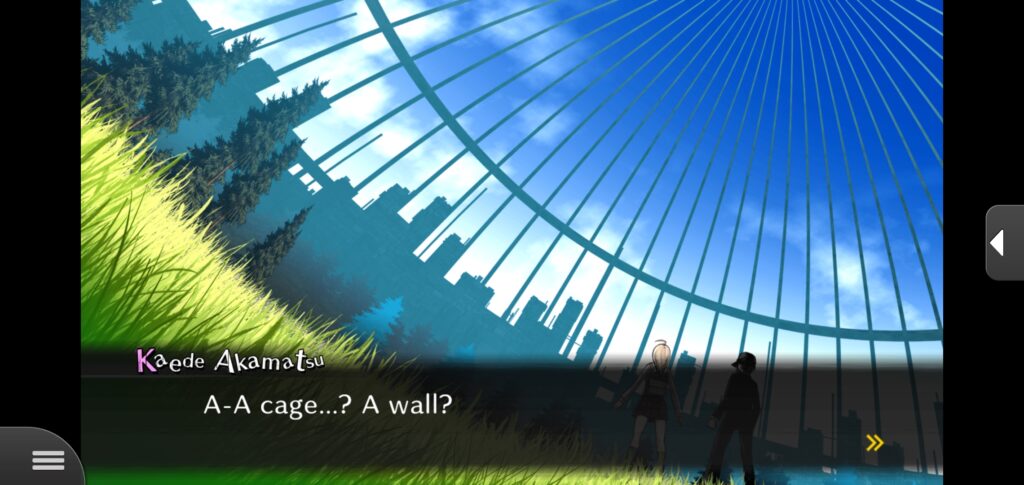
First things first, Danganronpa V3: Killing Harmony takes up a large amount of space on a phone….6.5 GB on Android to be specific. Once you’ve DLed the game and you begin installing it, it adds more and more to the download, so make sure you’re on WiFi and have an SD card or a decent amount of clear space on your phone! That’s one hell of a DL considering most apps are significantly smaller, but this is a console game that originally came on a cartridge, so not a huge shocker. There’s a fair amount of voice acting too with some scenes fully voiced and others partially. Lots of content means lots of storage space though!

With storage out of the way, it’s time to talk about the game itself. Originally, V3 had you navigating via controller and using a touch screen on the Vita to tap items if you wanted to. Since this version only uses a touch screen, the controls were modified somewhat. You put your thumbs on either side of the screen instead, with the left thumb acting as the movement stick and the right thumb acting as the camera. It’s a fairly responsive setup that mostly works as well as you’d expect. If you want to simply use one hand though, it’s almost impossible to navigate. You will definitely be holding your phone in both hands during any 1st person movement sections of the game. That also goes for the side-scrolling platformer section near the beginning. While touch controls aren’t ideal for these sequences, they work passingly well, enough to be acceptable.
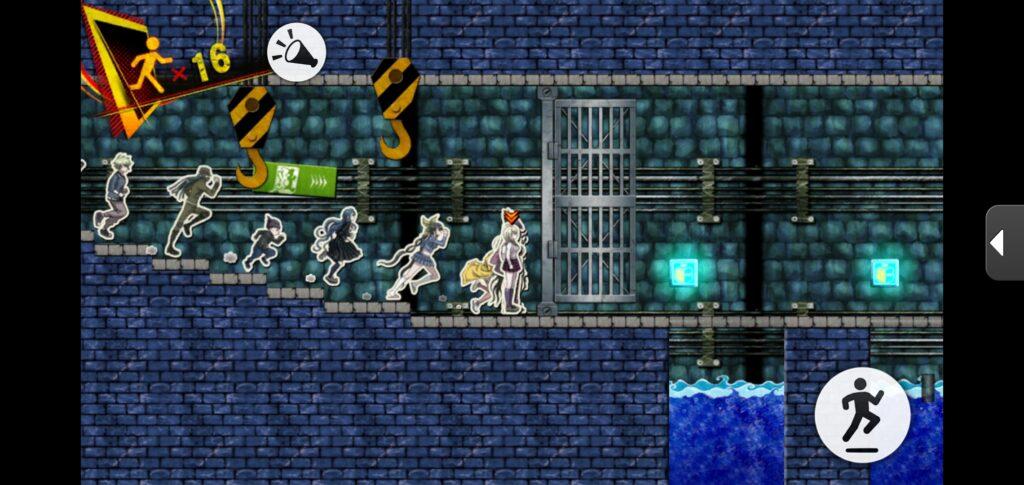
But Danganronpa isn’t primarily about control schemes. This is a visual novel at its heart and tapping the screen to advance text is ideally suited for mobile devices. Unfortunately, this is also a definite snag for the mobile version of V3 because to advance text rapidly, you simply hold your finger down on the screen and the dialogue blazes by so fast it’s a blur. Since this isn’t a controller, it’s easy to touch the edge of your phone’s screen and accidentally blow through 4-5 lines of text in an instant. For a game that’s based on deduction and paying attention to what people say, this is definitely problematic. There’s a log available through a tab on the right hand side of the screen, but it’s irritating to have to constantly swap back to see what was said because your finger (some of us have large hands, ok?) was accidentally touching the screen and you didn’t realize it.

Speaking of touching the screen, there are a few other issues with V3. Again, note big hands here, but one of the ways to progress in Danganronpa is to give gifts to the other participants in the killing game. To pay for these gifts you need Monocoins and the way to get them is by tapping everything in the background environment. You see where this is going, don’t you? Tapping the screen inevitably results in hitting things you didn’t intend to and there’s no way to direct the cursor (since there isn’t one) or tell which things can be tapped. As the environments are so item dense, it becomes an exercise in frustration to try and hit things without accidentally triggering an event or leaving the room. Even rotating the camera (which you can easily do with a swipe on the screen) doesn’t help because many of the items you can tap are so darn small. When my fingertip is the size of a whole chair on screen, it’s difficult to tap a mug on a shelf for example.
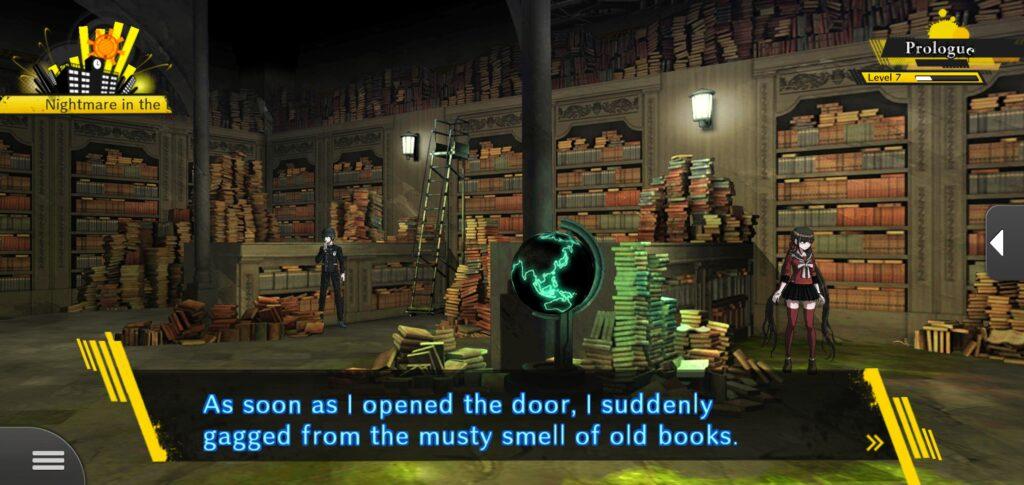
These issues continue into the class trials where it is difficult to access the key words and various other places in the game where you’re constantly tapping things you likely didn’t intend to. It’s not that the interface is bad. Danganronpa V3 is quite responsive overall and the input works great for what it is. It’s more that you’re limited by the capabilities of a phone and the screen size, which is just a bit too small to make gameplay as streamlined as it is on consoles. The game crashed twice as well, once during the extended install and once during play in the prologue. It seemed to stabilize after that though and no more crashes occurred during this review.

Finally, there was a sound issue, at least during this review playing on a Samsung Galaxy S10 Plus. Initially after installation, there was simply no sound. Volume levels were fine, all settings were fine. It was bizarre. Perfect game, zero sound. A reinstall didn’t solve the problem either. It turns out that the Galaxy S10 Plus has a sound setting under “Sound quality and effects” called Dolby Atmos for gaming. This is where Danganronpa V3 processes all sound for the game, and if you have it turned off (like some of us did) your sound simply will not work. This is a mandatory setting for this phone, and one would assume, for all Android 12 phones.
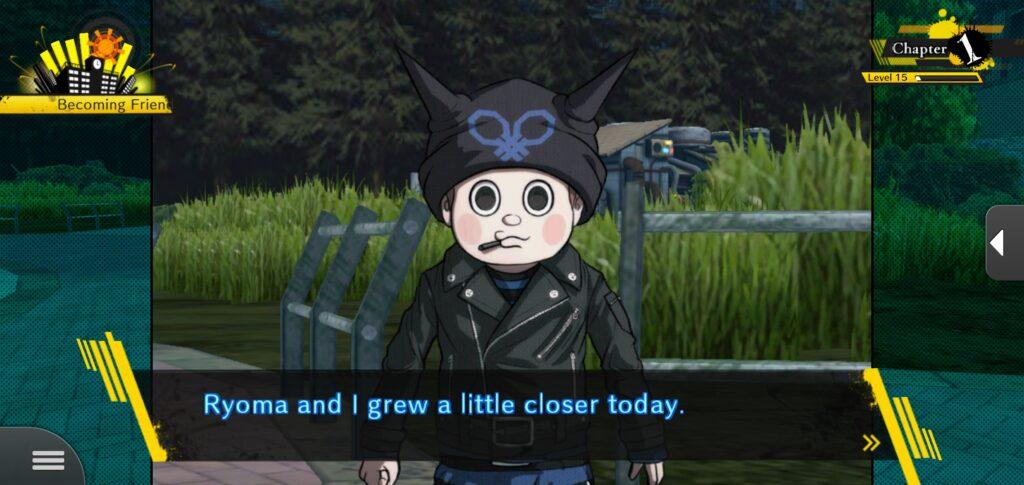
There are plenty of good things about Danganronpa V3 though! The load times are excellent (after that initial set of installs) and the visuals are simply outstanding. There’s not a glitch to be seen in the excellent 1st person 3D sequences, dialogue loads quickly, and the high definition graphics show every detail. The sound design is also spectacular, with excellent tracks and high quality voice acting. Remember this is an M rated game, so there are plenty of F-bombs and other surprisingly aggressive language. There is definitely no censorship here! Danganronpa V3: Killing Harmony is a dark comedic romp with the disturbing undertones we’ve come to expect from the series and the game is definitely well worth your time.
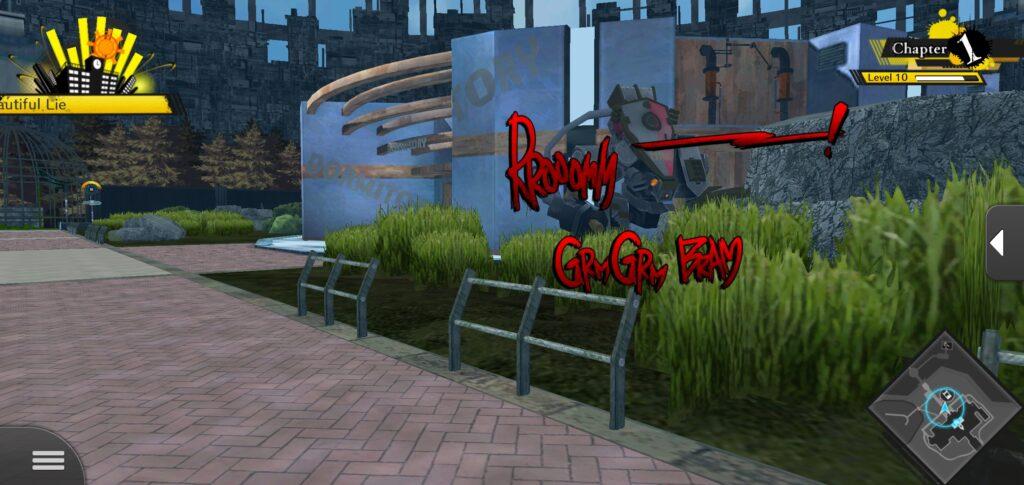
There’s no question that Danganronpa V3: Killing Harmony is an excellent game and a worthwhile addition to the franchise. If you love visual novels and have no other way to play the game, or want to play it on the go without carrying around a Switch or Vita (understandable) then this is the best way to play. While not without its quirks and issues and taking up a fair amount of drive space, Danganronpa V3 is certainly worth the price of admission at $12, especially considering console versions of the game can sell between $35 and $140 depending on the console and condition. All in all, this is a solid port of a fun game that is well worth adding to your digital collection!

This review is based on a digital copy of Danganronpa V3: Killing Harmony provided by the publisher. It was played on a Samsung Galaxy S10 Plus with a 128GB microSDHC card. Danganronpa V3: Killing Harmony is also available on the Apple Store and on consoles including the PS4, Switch, and PC.


